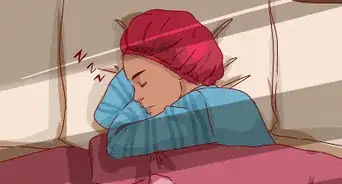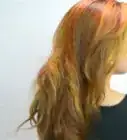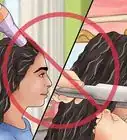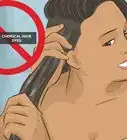This article was co-authored by Ndeye Anta Niang. Ndeye Anta Niang is a Hair Stylist, Master Braider, and Founder of AntaBraids, a traveling braiding service based in New York City. Ndeye has over 20 years of experience in African hair including braiding box braids, Senegalese twists, crochet braids, faux dread locs, goddess locs, kinky twists, and lakhass braids. Ndeye was the first female of her tribe in Africa to move to America and is now sharing her knowledge of African braids passed on from generation to generation.
wikiHow marks an article as reader-approved once it receives enough positive feedback. This article received 11 testimonials and 89% of readers who voted found it helpful, earning it our reader-approved status.
This article has been viewed 267,939 times.
Whether your hair is relaxed or natural, detangling takes patience and a gentle touch. Water, thick conditioner, and your own fingers will all help you separate knots and tangles without causing damage.
Steps
Detangling Natural Hair
-
1Section your hair. Using your fingers, divide your hair into convenient sections. If you have long hair, twist it into four or more sections. If you have shorter hair, use hair clips instead. Either way, treat your hair as gently as possible.[1]
- Although working with sectioned hair takes longer, it greatly reduces the amount of tangling that can happen.
-
2Wash your hair. Wash one section at a time, and clip or twist it again once done. Smooth your hair back over your scalp until it feels fully wet. Gently apply the shampoo or other washing treatment in a smoothing motion from scalp to tip. Massage the scalp with your fingertips, then wash thoroughly with water. Tilt your head back and wash in the direction your hair falls to reduce tangling.[2]
- Try a gentle washing method, such as co-washing, homemade cleansing mixtures, or shampoo that doesn't contain sulfates, paraben, or silicone. Sulfates, paraben, and silicone are damaging to hair and cause frizz and hair damage such as split ends and dry hair.
- Do not pile hair on top of your head while washing. This will only cause more tangles and breakage. If your hair is very tangled when wet, consider taking a wide tooth comb in the shower to help loosen knots carefully. Being too rough or using a brush may split ends shorter or cause damage.
Advertisement -
3Apply conditioner. Section by section, saturate your hair with a conditioner that has plenty of "slip." A conditioner with good slip makes it easy for your hair strands to slide past each other, practically undoing tangles by themselves. Detangler conditioners, hair mayonnaise, or other creamy conditioners generally work best. You may need to try several to find one that works on your hair type.[3]
- Whenever applying conditioner, focus on the ends of the hair, the oldest and most easily damaged area.
- You can make your own detangler conditioner from Aloe vera. Cut the Aloe vera leaf in the middle, scoop out the gel and blend it until it is foamy and slightly gel-like.
- Olive oil or another medium or heavy natural oil can work as well.[4]
-
4Put on a plastic hair cap. Cover your conditioner-coated hair with a plastic cap. Leave on for 10–20 minutes to allow your hair to absorb the oils.
-
5Detangle with your fingers. Let out one section of your hair. Detangle as much as possible with your fingers. Do not use force.[5]
- If your hair starts to dry out, add more water. The weight of the water pulls your hair downward, lengthening curls and making them less likely to tangle.
-
6Finish with a wide comb or brush. If your fingers can't do the job, move on to a seamless wide-toothed comb or a widely spaced, rubber bristled brush (such as a Denman brush). Start from the ends, gradually combing from higher points as the hair detangles.
- After detangling each section, the hair should be braided, twisted, or hair clipped in such a way that it won't tangle back up.
-
7Rinse out the conditioner. Detangler conditioner is usually too thick to leave in comfortably. Rinse out and apply a lighter, leave-in conditioner instead. Style your hair as you do normally.
- Most conditioner labels say to rinse out with warm water, but some stylists get better results with cold.
Preventing Tangles
-
1Deep condition your hair. Regular deep conditioning restores natural oils, keeping your hair smooth. For best results, deep condition right after detangling.[6]
- Hot oil treatments are another good option.
-
2Protect your hair while sleeping. Put up your hair at night and wear a satin or silk hair bonnet. At minimum, sleep on a satin or silk pillowcase instead of cotton, which can tear out your hair or tangle it.
-
3Change your style before it tangles. While braids, twists, and other protective styles reduce exposure to damage, they can't do so forever. Leaving them in for too long can cause stubborn tangles.
Expert Q&A
Did you know you can get expert answers for this article?
Unlock expert answers by supporting wikiHow
-
QuestionWhen should you detangle natural hair?
 Ndeye Anta NiangNdeye Anta Niang is a Hair Stylist, Master Braider, and Founder of AntaBraids, a traveling braiding service based in New York City. Ndeye has over 20 years of experience in African hair including braiding box braids, Senegalese twists, crochet braids, faux dread locs, goddess locs, kinky twists, and lakhass braids. Ndeye was the first female of her tribe in Africa to move to America and is now sharing her knowledge of African braids passed on from generation to generation.
Ndeye Anta NiangNdeye Anta Niang is a Hair Stylist, Master Braider, and Founder of AntaBraids, a traveling braiding service based in New York City. Ndeye has over 20 years of experience in African hair including braiding box braids, Senegalese twists, crochet braids, faux dread locs, goddess locs, kinky twists, and lakhass braids. Ndeye was the first female of her tribe in Africa to move to America and is now sharing her knowledge of African braids passed on from generation to generation.
Hair Stylist & Master Braider When your hair is wet or after you've applied conditioner, you're likely going to have a much easier time detangling your hair. Outside of that, you can use a detangling product and just brush or comb your hair to remove knots. Just keep in mind, you should detangle your hair regularly to keep problems from getting out of hand.
When your hair is wet or after you've applied conditioner, you're likely going to have a much easier time detangling your hair. Outside of that, you can use a detangling product and just brush or comb your hair to remove knots. Just keep in mind, you should detangle your hair regularly to keep problems from getting out of hand. -
QuestionWhat kind of shampoo is best for thick, wavy, coarse, and frizzy hair?
 Community AnswerProducts from Shea Moisture are good for this hair type.
Community AnswerProducts from Shea Moisture are good for this hair type. -
QuestionWhat do I do if my hair is really dry, thick, and matted? I try to use my fingers but it still hurts a lot.
 Community AnswerI would suggest moisturizing with water. Grab a spray bottle and wet your hair, then use a good conditioner to help smooth out the process of detangling.
Community AnswerI would suggest moisturizing with water. Grab a spray bottle and wet your hair, then use a good conditioner to help smooth out the process of detangling.
Warnings
- Never detangle with a fine tooth comb. That's just asking for trouble.⧼thumbs_response⧽
- Don't try to comb through a braid; this will just result in more tangles. Unravel the braid, then detangle.⧼thumbs_response⧽
- Your hair should not feel rough after applying any product. This may be a sign that the product is damaging your hair.⧼thumbs_response⧽
- Never comb hair from root to tip! It will cause major breakage.⧼thumbs_response⧽
Things You'll Need
- Shampoo (optional)
- Conditioner
- Wide tooth comb and/or wide-spaced brush
- Clips/scrunchies to section off hair
- Water
References
- ↑ http://www.curlynikki.com/2013/12/detangling-your-natural-hair.html
- ↑ Ndeye Anta Niang. Professional Hair Stylist & Master Braider. Expert Interview. 10 January 2020.
- ↑ http://www.curlynikki.com/2013/12/detangling-your-natural-hair.html
- ↑ http://mybrownbaby.com/2012/11/detangling-washing-conditioning-black-girl-hair-this-is-how-we-do-it/
- ↑ Ndeye Anta Niang. Professional Hair Stylist & Master Braider. Expert Interview. 10 January 2020.
- ↑ Ndeye Anta Niang. Professional Hair Stylist & Master Braider. Expert Interview. 10 January 2020.
About This Article
To detangle African hair, start by dividing it into 4 or more sections to make it easier to work with. First, wash each section of hair one at a time. Take a single section of hair and wet it, then massage shampoo through it and rinse thoroughly. Clip that section out of the way and move on to the next one. Once all of your hair has been washed, apply plenty of conditioner with good slip to each section so that the tangles can come out easily. Cover your hair with a plastic cap and keep the conditioner in for 10 to 20 minutes to absorb the oils. Remove the plastic cap from your head and use your fingers to detangle one section at a time. Use a wide comb to remove any stubborn tangles and then rinse out the conditioner thoroughly. For more information on detangling African hair, like how to prevent tangles, read on!
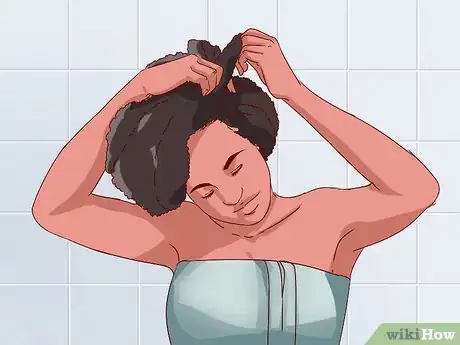
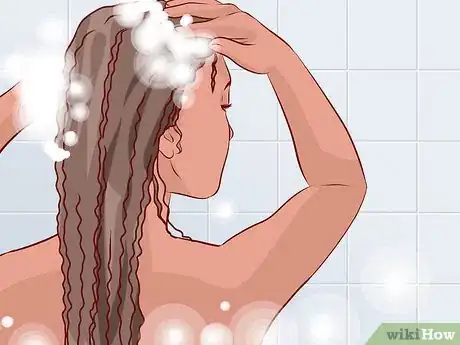

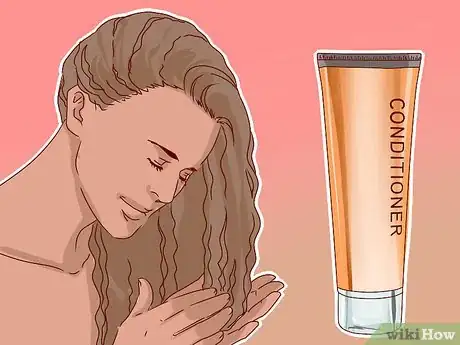
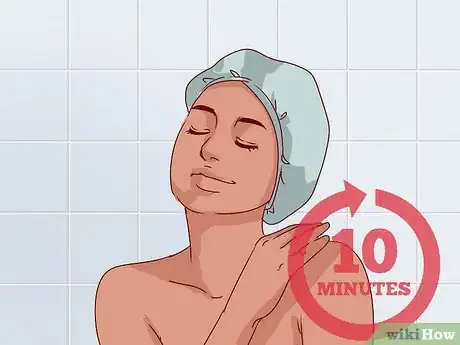

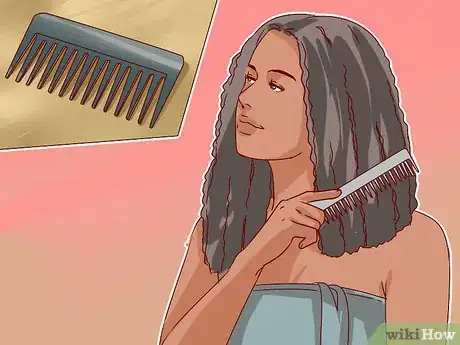
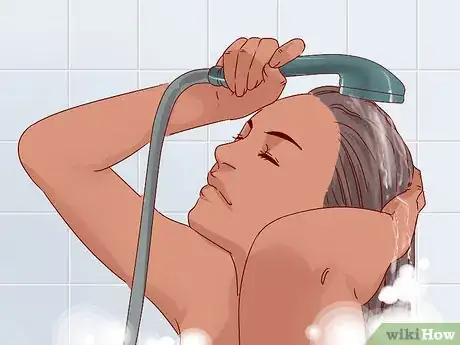
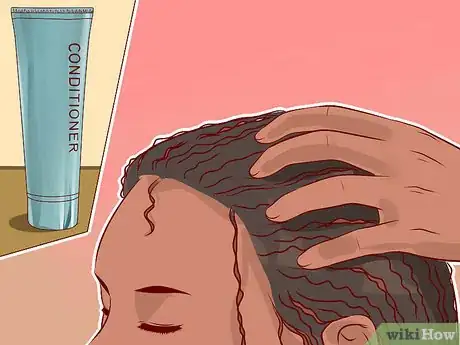
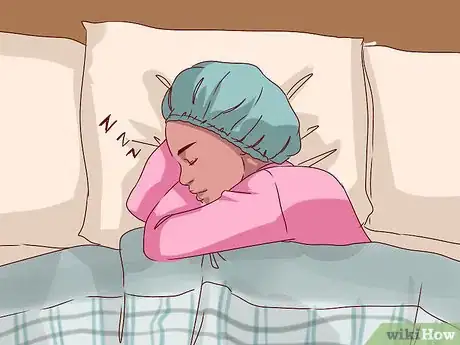
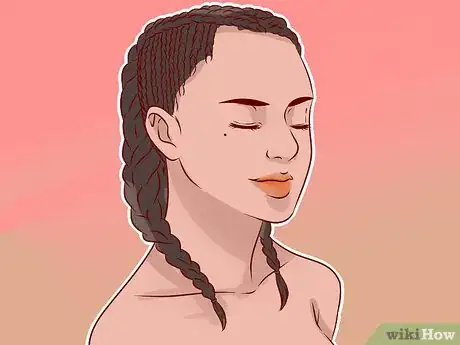
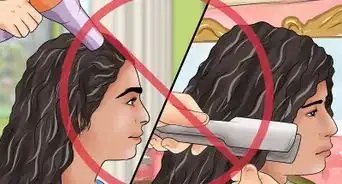
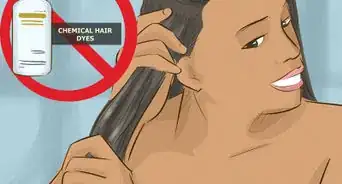

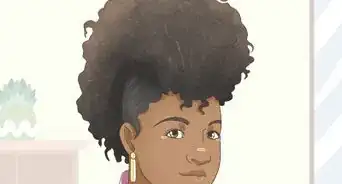



-Step-20.webp)


